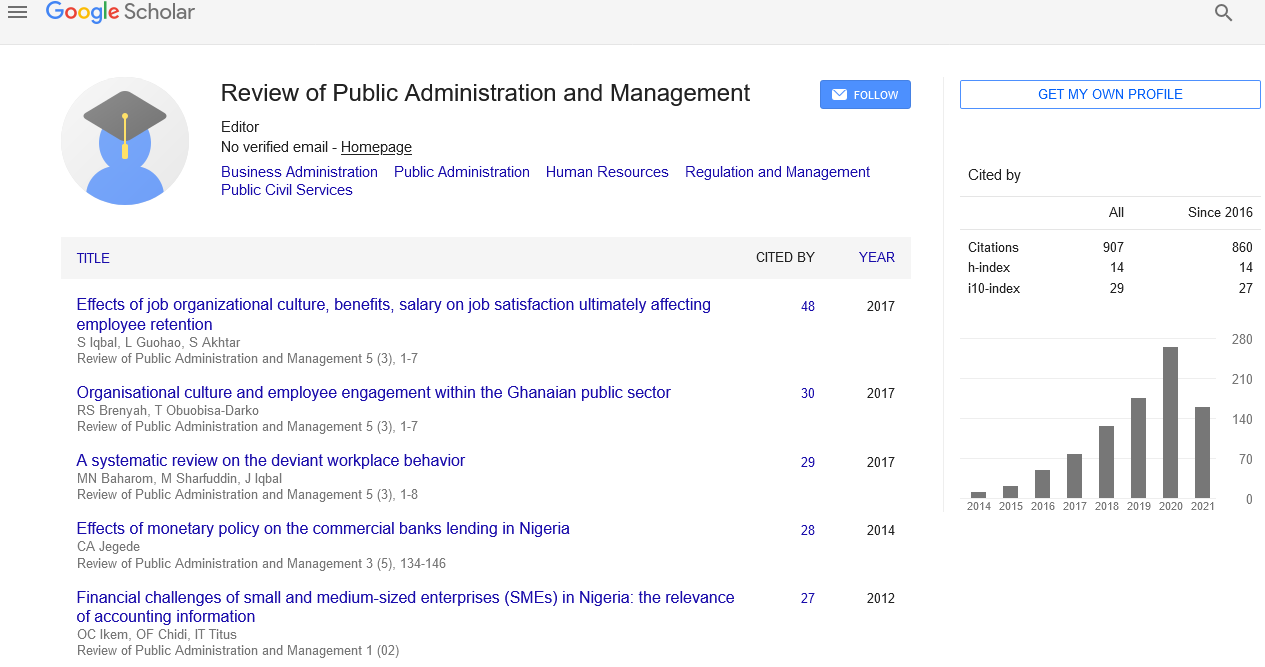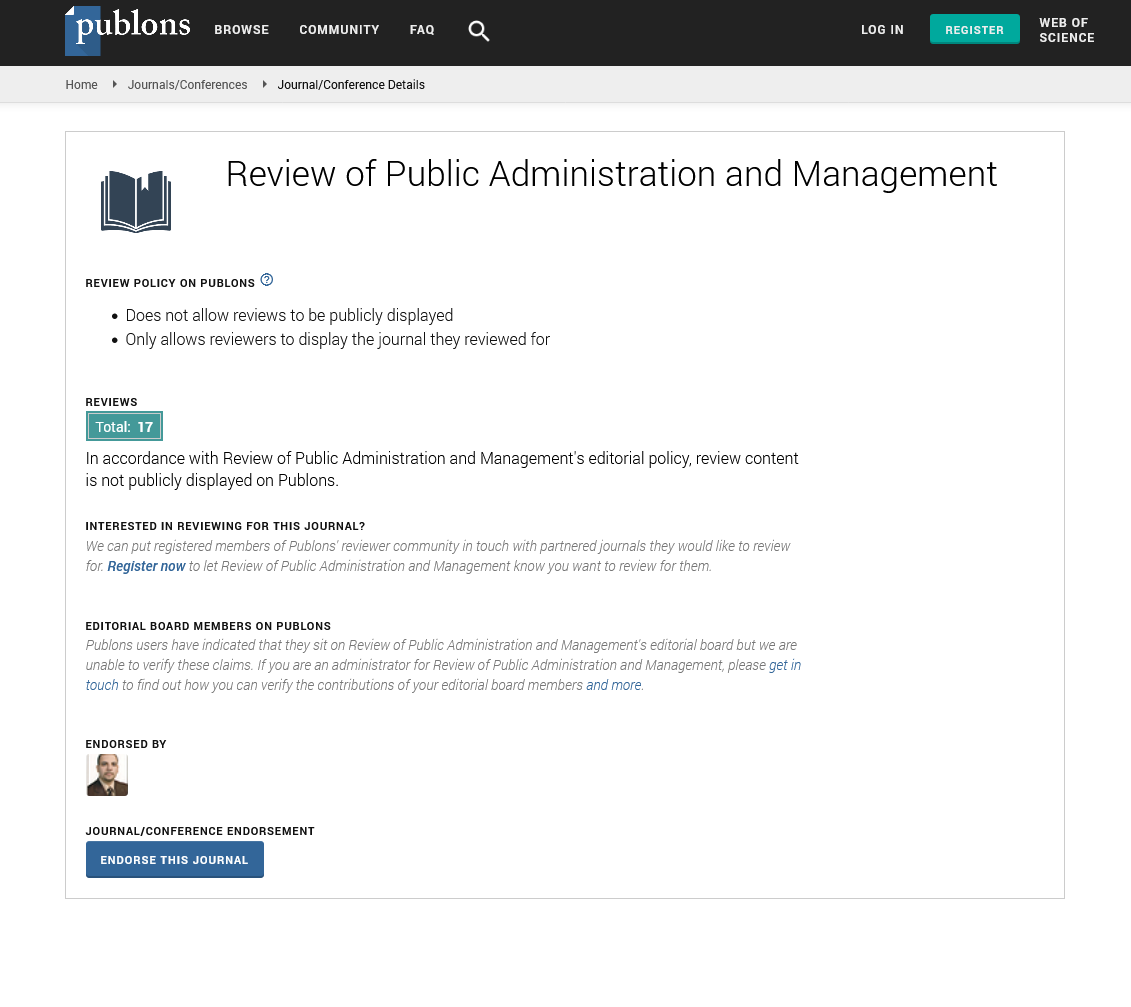Indexed In
- CiteFactor
- RefSeek
- Directory of Research Journal Indexing (DRJI)
- Hamdard University
- EBSCO A-Z
- Scholarsteer
- Publons
- Euro Pub
- Google Scholar
Useful Links
Share This Page
Journal Flyer

Open Access Journals
- Agri and Aquaculture
- Biochemistry
- Bioinformatics & Systems Biology
- Business & Management
- Chemistry
- Clinical Sciences
- Engineering
- Food & Nutrition
- General Science
- Genetics & Molecular Biology
- Immunology & Microbiology
- Medical Sciences
- Neuroscience & Psychology
- Nursing & Health Care
- Pharmaceutical Sciences
Perspective - (2022) Volume 10, Issue 4
Organizational Development and Regulatory Compliance
Laurent Nicod*Received: 07-Apr-2022, Manuscript No. RPAM-22-16749; Editor assigned: 11-Apr-2022, Pre QC No. RPAM-22-16749 (PQ); Reviewed: 25-Apr-2022, QC No. RPAM-22-16749; Revised: 02-May-2022, Manuscript No. RPAM-22-16749 (R); Published: 09-May-2022, DOI: 10.35248/2315-7844.22.10.340
Description
Since the turn of the century, regulatory compliance management has become more crucial in a variety of businesses as the number of rules has expanded. As a result of this evolution, corporate, chief, and regulatory compliance officers, as well as compliance managers, have been created. One of the most important objectives of these roles is to hire personnel whose sole responsibility is to ensure that the firm complies with stringent, complex legal standards and applicable legislation. Organizations can use regulatory compliance processes and strategies to help them achieve their business objectives. Compliance audit reports assist businesses in marketing themselves to customers. Vendors can use reports like Service Organization Control 1, SOC 2, and SOC 3 to demonstrate compliance with requirements like SOX. Transparency in compliance processes aids clients in developing trust in corporate operations while also potentially increasing firm profitability.
Regulatory compliance is critical for maintaining the integrity of company processes while also safeguarding public and stakeholder interests. It guarantees that firms function in an ethical and fair manner. When companies are open and honest about their regulatory compliance methods, clients and business partners gain trust and goodwill. This can improve brand perception and raise the company's total profitability over time. Consumers are safeguarded by good regulation from damaging and deceptive corporate practises such as predatory mortgage lending, which contributed to the subprime mortgage crisis of 2008. At the same time, business directors and managers who follow regulatory compliance can avoid criminal culpability and early career termination owing to conduct for which they may be held directly liable.
Control directory compliance
A directory, to put it simply, is a file system with a catalogued structure that contains various references to other computer files. This Directory administration could be supported by database innovation, which aids in the introduction of some wonderful content that will aid in the resolution of executive difficulties.
Ontological alignment: Executives focus on knowing compliance management principles in order to create compliance management solutions in the firm using this strategy.
Modeling control: This strategy seeks to comprehend the foundations of right and wrong while maintaining a comprehensible working environment and observing the compliances job. It focuses on creating a model with goals and determination to support the advancement of company forms as well as control targets.
Compliance with security standards and regulations is not just the responsibility of the CISO. Because the consequences of security breaches and non-compliance can be so severe, it's critical that your legal team collaborates with your compliance officer or security team to analyze incidents, public disclosures, rules, and risks, among other things. A solid working relationship with the legal department can assist keep your firm compliant, as well as encourage your board of directors and executives to take compliance and standards more seriously.
Some industries are controlled more strictly than others. For example, regulatory compliance requirements apply to the financial services business to protect the public and investors against unethical company behavior. Regulations govern energy providers for the sake of safety and environmental protection. Government agencies must adhere to compliance standards that demand equality and ethical behaviour from its employees. Because they handle vast volumes of sensitive and confidential patient data, healthcare organizations are also subject to stringent compliance rules. Hospitals and other healthcare providers must demonstrate that they have taken steps to comply with patient privacy requirements, such as ensuring that servers are secure and encrypted. HIPAA specifies data privacy and security requirements to protect patients' medical records. The HIPAA Breach Notification Rule, for example, mandates that following a data breach, compliant firms and their business affiliates notify patients. HIPAA privacy, security, and breach notification laws apply to healthcare providers, Cloud Service Providers (CSPs), and other business associates of healthcare organizations.
Citation: Nicod L (2022) Organizational Development and Regulatory Compliance. Review Pub Administration Manag. 10:340.
Copyright: © 2022 Nicod L. This is an open access article distributed under the terms of the Creative Commons Attribution License, which permits unrestricted use, distribution, and reproduction in any medium, provided the original author and source are credited.


